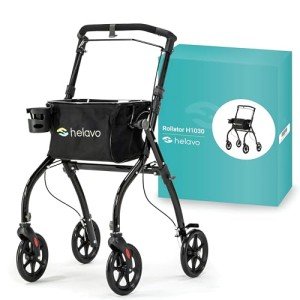Say "Yes" To These 5 Ergonomic Walker Tips

The Benefits of Non-Slip Walkers: Enhancing Mobility and Safety for All
As we navigate through the varied landscape of mobility help, one important product stands apart: the non-slip walker. This essential tool not only help those with limited mobility however also promotes independence and safety. In this blog post, we will look into the advantages of non-slip walkers, the various types offered, and what features to search for when selecting the ideal walker. Along the way, we will answer often asked questions and supply insights that enhance understanding of this important mobility device.
Why Choose a Non-Slip Walker?
Non-slip walkers are particularly created with security in mind. Slips and falls can trigger serious injuries, particularly for elderly people or those recuperating from surgical treatment. Incorporating anti-slip features into a walker can considerably lower the risk of accidents, making it an essential option for anybody in need of assistance. Here are a couple of reasons a non-slip walker is a worthwhile financial investment:
- Enhanced Stability: Non-slip grips and rubberized wheels provide remarkable traction on numerous surface areas.
- Improved Safety: The design minimizes the probability of slips, giving users self-confidence as they move.
- Increased Independence: Those who might have formerly relied on caregivers can gain back some degree of autonomy.
- Versatile Design: Non-slip walkers can be tailored to fit a series of individual requirements and choices.
Kinds Of Non-Slip Walkers
Non-slip walkers come in numerous designs, each customized to accommodate different mobility needs. Below is a comparison table highlighting the most common types of non-slip walkers readily available:
| Type of Walker | Features | Suitable For | Cost Range |
|---|---|---|---|
| Standard Walker | Four legs, lightweight, rubber pointers | General usage, moderate assistance | ₤ 50 - ₤ 100 |
| Two-Wheeled Walker | 2 front wheels, 2 rear legs with rubber pointers | Individuals who require assistance but can walk | ₤ 70 - ₤ 150 |
| Rollator | Four wheels, braking system, seat alternative | Active individuals; offers a rest alternative | ₤ 100 - ₤ 250 |
| Knee Walker | Designed for individuals with knee injuries | Short-term recovery from leg or foot injuries | ₤ 80 - ₤ 200 |
| Pediatric Walker | Smaller sized size, colorful styles | Children with mobility issues | ₤ 60 - ₤ 120 |
Aspects to Consider When Choosing a Non-Slip Walker
Picking the best non-slip walker can be a frustrating task. Here are some aspects to keep in mind when making a choice:
- User's Weight and Height: Ensure that the walker supports the user's weight and matches their height.
- Kind of Surface: Consider where the walker will be primarily utilized (indoors vs. outdoors) to pick an appropriate tire setup.
- Portability and Weight: If the walker requires to be transported, consider weight and foldability for convenience.
- Adjustability: Look for a walker that can be adapted to the user's specific height needs, ensuring convenience and safety.
- Additional Features: Some walkers consist of features such as built-in seats, storage baskets, or advanced braking systems.
Additional Features of Non-Slip Walkers
While taking a look at non-slip walkers, several additional features can boost user experience:
- Ergonomic Grip Handles: Soft and comfortable grips can reduce stress on the hands.
- Reflective Materials: Adding increased visibility can assist those who might be using the walker in low-light conditions.
- Personalized Accessories: Consider alternatives like cup holders, trays, or perhaps oxygen tank holders for included convenience.
- Resilience: Look for walkers constructed from high-quality products to ensure long-lasting use.
Often Asked Questions (FAQs)
1. What is the primary difference between a standard walker and a rollator?
- A standard walker has four legs and needs the user to raise it with each action, whereas a rollator has wheels, enabling the user to push it along more easily.
2. Are non-slip walkers ideal for outdoor usage?
- Yes, numerous non-slip walkers are developed for different surfaces. It's important to choose a design with suitable wheels for outdoor terrain.
3. Can a non-slip walker be utilized by people who have had hip or knee surgery?
- Definitely. Non-slip walkers supply stability and can be important for those recuperating from such surgeries.
4. How do I adjust the height of a walker?
- A lot of walkers feature adjustable legs that permit you to alter the height. Refer to the producer's guidelines for particular modification directions.
5. Exists a weight limitation for non-slip walkers?
- Yes, each walker has actually a specified weight limit. It is essential to thoroughly check this detail before acquiring to make sure safety.
6. Can I utilize a non-slip walker in stores or public locations?
- Yes, non-slip walkers are designed for use in various environments. Simply ensure the design you select is maneuverable enough for enclosed areas.
Purchasing a non-slip walker can supply users with enhanced mobility, self-confidence, and independence. Indoor Walker of styles and features available allows users to pick a walker that best fits their distinct requirements. By thinking about aspects such as weight capability, adjustability, and extra features, one can ensure that they or their liked ones are safe and comfortable.
For those seeking to restore their self-reliance, non-slip walkers not only aid in mobility however likewise add to a more active way of life. If you or someone you know could take advantage of a non-slip walker, put in the time to check out the choices readily available-- your journey towards increased security and autonomy begins here!

